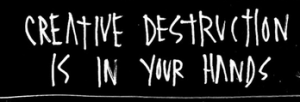I’ve been reading a fair amount recently about the “lack” of innovation leadership within organizations. Where there is smoke there has to be fire I suspect, but does it need to be so?
Internal leadership of innovation suffers from exactly the same critical problem that the people working on innovation suffer from, of a lack of time and opportunity to study alternatives, as all are caught up in ‘driving’ their innovation through their internal system.
This “alternative voice” is often missing and this can so easily come through external advocacy. This is unlikely to come from the innovation consultant brought in to undertake ongoing work as that is very different, this is more critical, more specialized, even strategical supporting role, involving peer-to-peer engagement.
This peer-to-peer helps explore those critical issues relevant to you and where your organization is. Its aim is to offer a different perspective, so as to alter opinions or build new insights, that often cannot be evaluated without considerable deflection from the daily managing innovation that is taking place in often complex and challenging situations.
Yet alternatives need to be considered so knowledge can evolve. Continue reading “Critical intervention points of innovation peer-to-peer engagement”


